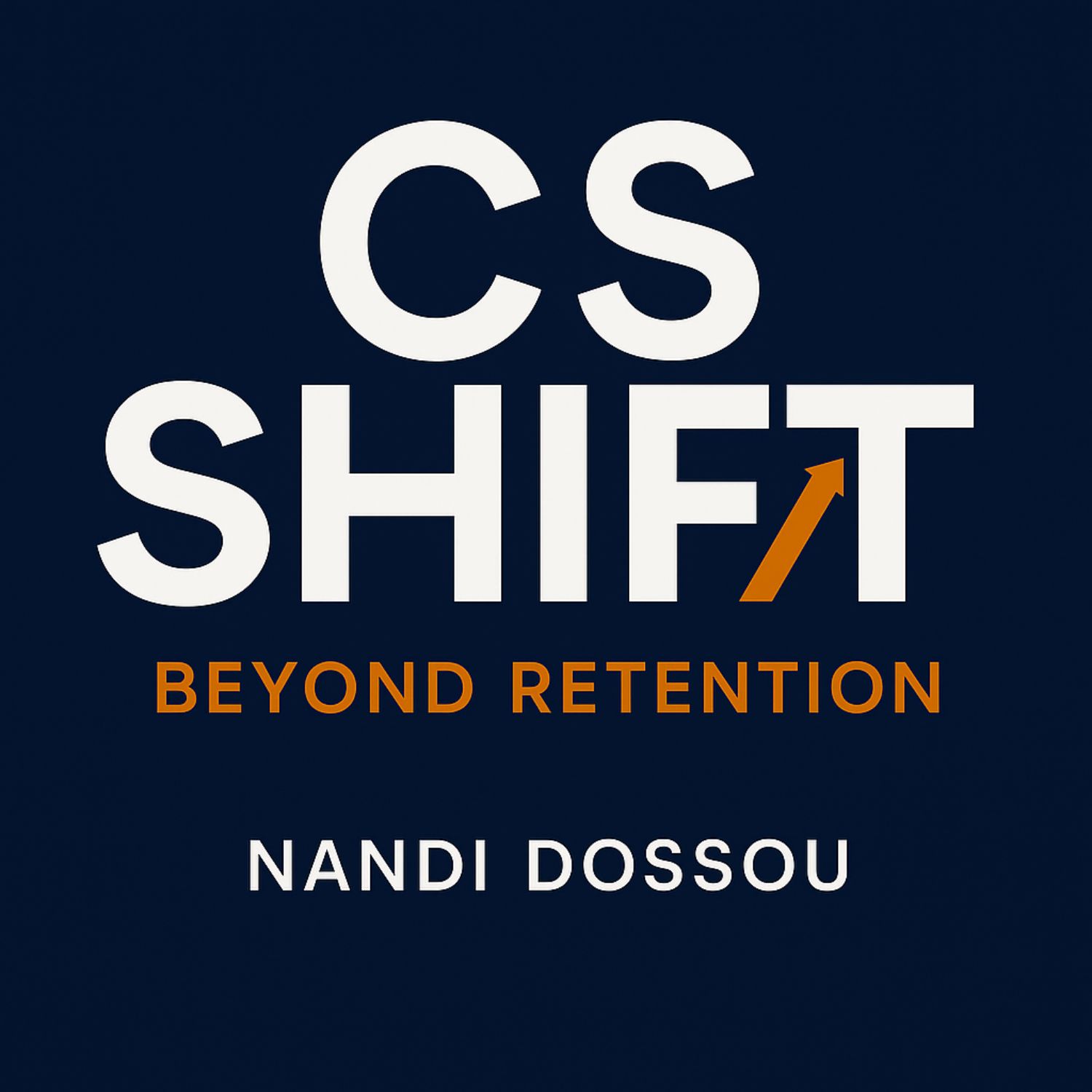Uncovering Your AI Gold Mine in your CS data ecosystem
In this episode, I'll show you exactly how to audit your data ecosystem and identify where AI can have the biggest impact.
Here's what we cover:
- The data source inventory framework (how to assess quality, completeness, and accessibility)
- The integration reality check that most teams fail
- How to analyze your deliverables and find automation opportunities
- The difference between AI targets, AI-assisted work, and quick wins
Because if you're spending more time formatting data than generating insights, you have a massive AI opportunity.
This builds directly on Episode 1's process audit. If you missed it, start there.
Next week: Episode 3 on strategic alignment.
Transcript
Welcome to CS Shift, the podcast that goes beyond retention with strategies for customer success leaders navigating the new era.
Speaker A:Let's dive into today's episode.
Speaker A:Welcome back to CS Shift.
Speaker A:I'm Nandi Dasu and this is part two of our AI Readiness Audit series.
Speaker A:Last week we audited your processes and identified where manual work is hiding AI opportunities.
Speaker A:Today we're going data detective mode, examining your information ecosystem and the deliverables you create in order to uncover where AI can add the most value.
Speaker A:So let's start with your data ecosystem audit.
Speaker A:First of all, look at your systems.
Speaker A:List every system that contains customer data, CRM, product analytics, support systems, communication platforms, billing and usage systems, survey and feedback tools for each system, Evaluate the data quality, how clean and consistent is it?
Speaker A:Data completeness, Are there significant gaps?
Speaker A:Data accessibility, how easy is it to extract and combine?
Speaker A:Data freshness, how current is the information?
Speaker A:And honestly, this can be a workshop you can do with your teams because that will really also help you understand some of the things you don't necessarily know and also work with them so that they can contribute to this project.
Speaker A:So the thing is, by doing this exercise, this can really create also a very clear reality check, right?
Speaker A:Because it's very useful to understand how many systems do you manually pull data from for customer insights, how much time you spend combining data from different sources, how often do you discover data discrepancies between systems, and how confident are you in your data accuracy, right?
Speaker A:And from there you might also define data quality red flags when you find that there are multiple versions of truth across systems, missing historical data, inconsistent data definitions that will definitely also, you know, help you see where AI can add value, but also where work is needed internally so that AI can definitely use the right data.
Speaker A:Now, from there, now we're going to look also at your deliverable analysis.
Speaker A:Look at your regular reports, customer health dashboards, quarterly business reviews, executive summaries, renewal risk reports, expansion pipeline updates, as well as your customer facing deliverables success plans, roadmaps, usage reports and insights, benchmark comparisons, ROI demonstrations.
Speaker A:For each deliverable, assess how much manual work is involved in creation, how personalized is it to each customer, how timely is the information, and how much insight, the accessible data does it provide.
Speaker A:The reason why I'm sharing this type of exercise is really for you to create your automation opportunity matrix where there is high manual effort and high repetition.
Speaker A:This is your prime AI target, right?
Speaker A:If you need to produce health score updates every week and it involves high manual effort and high repetition, well, this is your prime AI target.
Speaker A:Now when there is high manual effort and low repetition, this is your AI assisted opportunity, right?
Speaker A:You might need AI for custom competitive analysis, deep dive account research or complex ROI calculations.
Speaker A:And also you might identify that there are places where there is low manual effort from your teams as well as high repetition.
Speaker A:These are your quick win territory, right?
Speaker A:When you look at email communications renewal reminders, maybe there is already something in place that you know help your team in terms of productivity.
Speaker A:With the automation opportunity metrics and with the data analysis you have done, you now will see where your team is spending more time covering and formatting data, then analyzing and acting on insights.
Speaker A:And this is where you will see also your AI opportunity.
Speaker A:So your homework is really to complete your data inventory and deliverable analysis.
Speaker A:AI can only automate you know where data is good while automating something which is not working will amplify what is not working.
Speaker A:So calculate how much time your team spends on data gathering versus inside generation and then maybe you're going to be surprised by what you discover.
Speaker A:Next we are going to look at your strategic alignment because AI should enhance your CS strategy and not replace it.
Speaker A:If your strategy is not clear, AI will just automate confusion.
Speaker A:So thank you so much for listening to this episode and for doing the hard work of honest assessment.
Speaker A:And remember, the shift is happening.
Speaker A:This is Nandi Desu on CSS Shift.
Speaker A:Thank you for listening to this show.
Speaker A:Remember, the new mandate for customer success is driving growth and growth does not happen in isolation.
Speaker A:It's driven by strategic and operational leadership.
Speaker A:Subscribe and share this episode with an overseas leader ready to shift their strategy.
Speaker A:I'm Nendi do sue and this is CS Shift.

